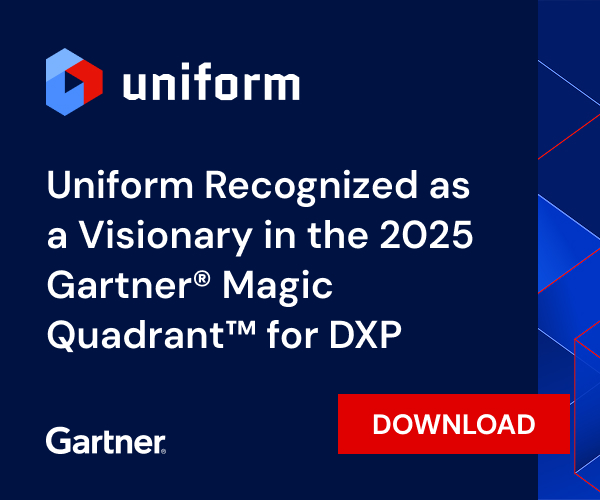Enterprise leaders often wonder, "How quickly can we see results from our composable DXP implementation?" We've found that 90 days represents the minimum viable timeline for establishing meaningful change while avoiding the common pitfalls that derail longer implementations.
The magic isn't in the specific number of days—it's in understanding why shorter timelines fail and longer ones lose momentum.
Most enterprise
composable digital experience platform (DXP) implementations stretch 6-12 months when teams try to solve everything at once. They attempt to migrate every piece of content, integrate every system, and train every user simultaneously. The result? Analysis paralysis, scope creep, and stakeholders who lose faith before seeing tangible results.
Composable architecture fundamentally changes this dynamic. Instead of replacing your entire digital infrastructure, you connect existing systems in new ways. This means you can focus on proving value quickly rather than rebuilding everything from scratch.
The 90-day framework works because it forces prioritization decisions that naturally align with business impact. When you only have three months, you can't afford to waste time on nice-to-have features or edge cases that might never matter.
The first month reveals whether your
composable strategy is sound. This isn't about perfect technical architecture—it's about proving that your chosen platforms can communicate with one another in ways that matter to your business.
Most organizations discover that their "simple" integration requirements are more complex than anticipated and that they need fewer integrations than they initially planned. A customer relationship management system that seemed critical during planning might prove unnecessary for the initial launch, while an analytics integration you considered optional becomes essential for measuring progress.
The real milestone is confidence, more so than technical completeness. By day 30, your team should feel convinced that the architecture will support your goals, even if everything isn't perfectly polished yet.
Essential month one deliverables:
- Core platform operational with security protocols established
- Primary data sources connected and flowing correctly
- Initial content models defined and tested
- Development team confidence in the technical foundation
Month two separates successful implementations from expensive failures. This phase isn't about feature demonstrations or theoretical training sessions. It's about daily practice with real content under real deadlines.
Marketing teams often resist new workflows initially, especially if they've developed workarounds for previous platform limitations. The key insight is that adoption happens through necessity, not enthusiasm. When teams must use the new platform to meet business deadlines, they develop genuine proficiency quickly.
Content migration during this phase serves a dual purpose. Obviously, you need your content in the new system. More importantly, the migration process forces conversations about content quality, organization, and governance, which organizations typically avoid. Teams discover redundant content, outdated messaging, and unclear ownership—problems that existed long before the new platform, but become impossible to ignore during migration.
In the final month, composable architecture starts demonstrating its core promise: speed and flexibility. Teams who struggled with basic content updates in month one are now implementing
personalization rules and
A/B testing new approaches without requiring development support.
This acceleration happens because composable systems reduce the friction between having an idea and testing it in the market. Traditional monolithic platforms require development work for most meaningful changes. Composable systems let marketing teams experiment directly and scale successful approaches using the same tools they used for testing.
Personalization implementation in month three isn't about sophisticated artificial intelligence or complex behavioral modeling. It's about simple audience segments responding to different messaging or product recommendations. But even basic personalization delivered quickly demonstrates the platform's potential in ways that resonate with business stakeholders.
Organizations frequently ask if they can accelerate this timeline. The honest answer is that 90 days is aggressive for most enterprise environments. The constraint isn't technical complexity—modern composable platforms are easier to implement than traditional alternatives.
The real limitation is organizational change management. Teams need time to develop confidence with new workflows, discover optimization opportunities, and build internal advocacy for ongoing investment. Rushing this process creates superficial adoption that crumbles under pressure.
However, organizations with strong technical teams and clear executive sponsorship often see meaningful results by day 60. The key indicator is whether marketing teams are independently managing content updates without submitting development requests. Once this milestone is reached, the remaining optimizations tend to accelerate naturally.
Success isn't measured by feature completeness or technical sophistication. It's measured by whether your organization operates differently than it did three months earlier. Can marketing teams launch new campaigns without IT bottlenecks? Do content updates happen in hours instead of days? Are you testing new approaches to customer engagement based on real data rather than assumptions?
Key success indicators:
- Marketing teams independently manage 80% of content updates
- Campaign launch time reduced by 60-70%
- Page load speeds improved by 30-40%
- Development support requests decreased by 80%
- A/B testing and personalization actively in use
These operational changes matter more than any specific technology implementation because they represent your organization's capacity for ongoing adaptation. The composable DXP is just the enabler—the real transformation is in how quickly your teams can respond to market opportunities and customer needs.
By day 90, successful organizations have established a foundation that supports continuous optimization rather than periodic major updates. They've shifted from asking "how do we implement this technology?" to "how do we leverage this capability to compete more effectively?"
More than any technical milestone, that shift in perspective determines whether your composable DXP investment delivers lasting value.
Organizations seeing the fastest results from composable DXP implementations aren't waiting for perfect conditions—they're starting with clear timelines and proven frameworks.
Let's talk about your specific situation if you're ready to move beyond lengthy implementations that drain resources and delay results. Our team has guided dozens of enterprises through successful 90-day launches, and we know exactly what separates the success stories from the expensive delays.






.png&w=1080&q=90)
.png&w=1080&q=90)
.png&w=1080&q=90)